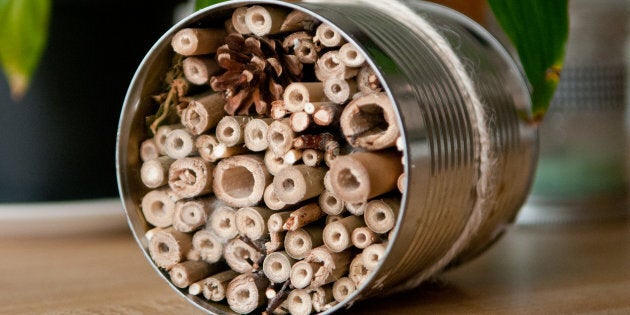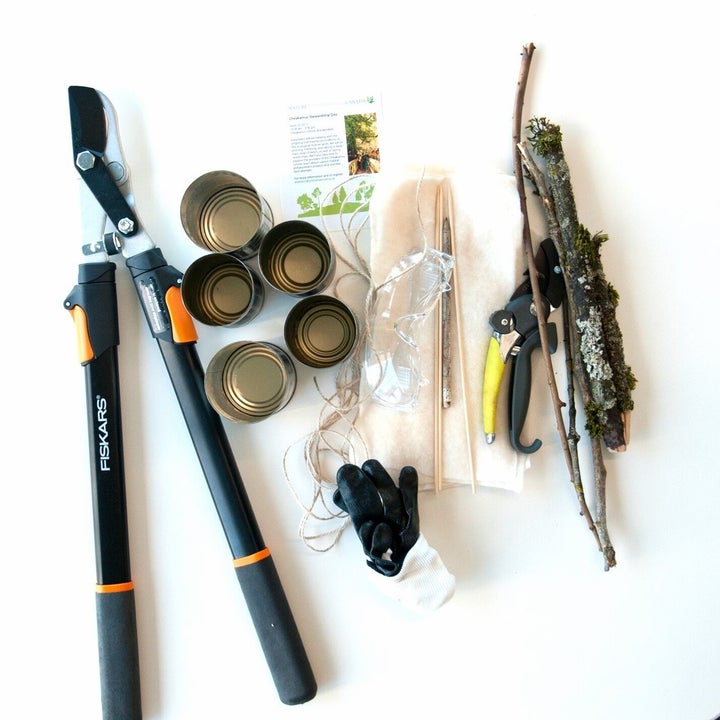
Are you looking for an excuse to get crafty this fall? Are you hoping to build a positive relationship with bees? You're in luck! Our native bees are non-swarming and non-aggressive. They're in need of homes and could benefit from a bit of your tender loving care.
Bee hotels help provide shelter for pollinators to rest and lay eggs. Specifically, bee hotels target solitary bees that live independently of other individuals and that nest in above-ground cavities. Solitary bees are very important, as they provide essential pollinating services for plants that produce many of our fruits, vegetables and flowers. Though they don't produce honey, they're more efficient at pollinating than honeybees.

Solitary bee numbers have diminished around the world due to landscape fragmentation, loss of suitable nesting and foraging sites and the introduction of toxins, such as herbicides and pesticides. We can all take part in supporting native bees by educating ourselves about the importance of protecting pollinators, sharing what we learn with others and looking out for the well-being of bees.
Here are a few examples of how you can help be a good bee neighbour:
- plant a variety of native flowering plants
- select plants that bloom at different times of year
- avoid herbicides and pesticides, especially when bees are present
- accept a small degree of "mess" in the yard — piles of wood, twigs and leaves provide shelter for insects and pollinators
- build and maintain a bee hotel
Bee hotels are not only a great way to get creative, but also an excellent way to make a positive impact on local ecosystems in our backyards and neighbourhoods. Below are the materials and instructions needed to build a custom-made bee accommodation.
Tools and supplies
- gloves and safety glasses
- tin cans (small: soup cans; medium: chickpea, tomato)
- bamboo of various sizes (two to 10-millimetre-diameter hole)
- sharp tool for cutting bamboo (loppers, shears or hand saw)
- skewers
- fill material (twigs, natural cotton, pine cones, leaves)
- string or twine

Instructions
- Use gloves and safety goggles to protect your eyes and hands from sharp tools and bamboo splinters. Make sure to supervise children. Sharp tools should only be handled by those able to use them safely.
- Measure and cut bamboo so that each piece is about one centimetre shorter than the length of the tin can you plan on using. Use the skewers to punch through and hollow out as much of the bamboo's soft interior as you can.
- Place the cut bamboo in the tin can until it is approximately 80 per cent full. The rest of the space can be filled with leaves, pine cones, twigs and cotton. You can get creative here! The space between the bamboo and the fill is just as important a nesting area as the space inside the bamboo.
- Once you can hold the tin can upside down without the contents falling out, your bee hotel is ready to be hung. Wrap the string or twine around the can and hang it outside. Now it's time to display your vacancy sign — you're open for business!
Once you get comfortable with the process, you can start to experiment with different architectural styles. For example, you can drill holes into leftover blocks of wood, roll recycled paper into straw-like tubes instead of using bamboo and tie small branches into bundles after tree pruning or a windstorm.
Hotel management
Bee hotels should be hung outdoors where they are protected from rain and exposed to morning sunlight. The warmth of the sun acts as an alarm clock and lets the bees know it's time to get up and go to work.
Finally, just like any accommodation business, it's important to keep the rooms clean for guests. Your bee hotel should be carefully cleaned each year after the young bees have emerged in the summer.
This post was written by Millie Kuyer and originally appeared on the Nature Conservancy of Canada's blog,Land Lines.
Also on HuffPost: